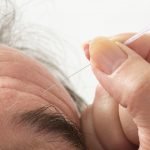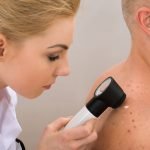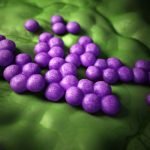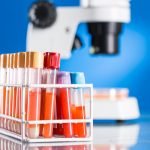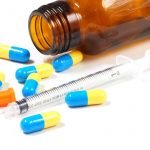Evidence for the Metabolic Cause of Autism
Jacob Schor, ND
In the last few years, several intriguing papers published on autism provide a strong argument that this puzzling disease is a metabolic disorder. This new information goes a long way toward making sense of what has been a confusing and frustrating disorder.
The number of autism cases diagnosed is increasing rapidly; a 10-fold increase of cases in just 15 years. Some of this increase can be explained by increased public and medical community awareness, and the resulting improved diagnosis. While there is a genetic component to the disease, it can’t explain this rapid an increase. Environmental triggers must also be involved. Many parents of autistic children believe mercury-containing vaccinations are to blame, yet so far researchers have failed to establish a clear link.
Autism’s Link with Heavy Metals
A study by S. Jill James published in the April 2005 issue of Biology may help us move toward understanding and treating this disease. James directs the biochemical genetics department at Arkansas Children’s Hospital. While reviewing blood samples from supposedly healthy children, James noticed that the chemistry of one sample stood out as unusual. The atypical sample came from a boy who was autistic. Curious, James got blood samples from 20 other autistic children. All the samples exhibited a similar unusual biochemical fingerprint, which James went on to confirm in 75 autistic children (James et al., 2004). In a control group of 75 healthy kids, none showed this same chemical fingerprint in their blood (James et al., 2005).
The autistic kids had unusually low concentrations of the antioxidant glutathione in their cells. The ratio of active glutathione to its inactive breakdown products was also unusually low.
“This pattern is consistent with an inability to detoxify [poisons], especially heavy metals” such as mercury or lead, James says. That’s because glutathione normally binds to heavy metals and the body then targets the molecular complex for elimination.
A study reported on in the May 30 issue of New Scientist takes this a step further.
The magazine reports that urine samples from French children show a link between autism and heavy metals, and the article dangles the possibility that the drugs used to treat heavy metal poisoning might be useful in treating autism (New Scientist, 2006).
Urine samples obtained from autistic children contained high levels of chemicals called porphyrins, which are precursors to hemoglobin. Heavy metals block hemoglobin production, causing higher than expected amounts of porphyrin to accumulate and appear in the urine. The concentrations of one molecule, coproporphyrin, were 2.6 times higher in autistic children than in controls.
That autism is linked to heavy metal toxicity isn’t a totally new idea, of course. The International Journal of Toxicology reported in 2003 that infants with autism had a decreased ability to excrete mercury compared to other children. Researchers had compared mercury levels in hair samples from healthy and autistic children and found almost seven times the amount of mercury was being excreted by the healthy kids (Holmes et al., 2003).
Of course, an ongoing debate has raged for years over the idea that autism is triggered by the mercury preservative thimersol in vaccines. One newer theory proposed in October 2005 suggests that the mercury in the vaccines, although a small quantity, is enough to inhibit the action of the enzyme methionine synthetase in genetically susceptible individuals and cause changes in brain development (Mutter et al., 2005).
The New Scientist article also says that normal porphyrin levels can be restored through chelation in autistic children, but does not report whether it affected their mental function. In recent years, a good number of anecdotal reports have circulated regarding the benefit of heavy metal chelation therapy for autistic children, yet I have not yet seen a well-controlled study of this therapy.
Vitamin B12 Therapy
Although James reported lower than normal levels of homocysteine in the 2004 paper (James et al., 2004), a newer study published in the April issue of Life Sciences reports the opposite. This study reported statistically significant differences in total homocysteine levels in children with autism compared to the control group: 9.83 vs. 7.51. In the autistic kids, vitamin B12 levels were low (Pasca et al., 2006).
This new information makes sense in light of the therapies we have found clinically useful in treating autism. Several useful autism treatments have focused on reducing toxic load in the patient’s body, especially heavy metals, but also a range of organic poisons. These new ideas also tie in with the work of Bernard Shaw, whose focus on bowl dysbiosis in treating autism now makes more sense. Shaw, as a researcher at the CDC in Atlanta, noticed that some autistic children had high levels of fungal metabolites in their blood, secondary to fungal or yeast growth in their intestines. These kids improved with anti-fungal treatment. Some chemicals produced by yeast can be neurotoxic; autistic kids may simply be more sensitive to these chemicals than healthy kids and experience negative effects even at very low concentrations.
This new understanding may also help us understand the vaccine theory, which has been so confusing. Now that we can identify a genetically sensitive subgroup by their blood chemistry, we may be able to find a clear statistical correlation between vaccinations and autism. Vaccines may not trigger autism in “normal” kids, but could be the last straw of toxic load in kids deficient in glutathione.
Given the elevated homocysteine levels, the therapeutic use of high-dose vitamin B12 in the form of methylcobalamin as advocated by James Neubrander, MD, and others also makes sense. Although I haven’t seen peer reviewed data yet, Neubrander claims a greater than a 90% response rate in autistic children following his B12 protocol (Neubrander, n.d.).
If this information “holds,” we will soon be able to identify infants susceptible to developing autism by their blood chemistry. It may be as simple as screening for homocysteine and glutathione. Those kids at risk can be protected environmentally to reduce their toxic exposure. The nutritional tricks that can erase this blood chemistry fingerprint may work to prevent onset of autistic behavior in these kids. Whether or not changing this blood chemistry in autistic kids will reverse the disease once established is the big question. Certainly, even at this stage of understanding, it appears worth trying.
It’s one of those things that won’t hurt and might help a whole lot.
References
James SJ et al: Metabolic biomarkers of increased oxidative stress and impaired methylation capacity in children with autism, Am J Clin Nutr 80:1611-7, 2004.
James SJ et al: Low plasma methionine, cysteine, and glutathione levels are associated with increased frequency of common polymorphisms affecting methylation and glutathione pathways in children with autism, Experimental Biology April 2: Abstract, 2005.
New Scientist: www.newscientist.com/channel/health/mg19025535.400.html
Holmes AS et al: Reduced levels of mercury in first baby haircuts of autistic children, Int J Toxicol Jul-Aug; 22(4):277-85, 2003.
Mutter J et al: Mercury and autism: accelerating evidence?, Neuro Endocrinol Lett Oct, 26(5):439-46, 2005.
James SJ et al: Metabolic biomarkers of increased oxidative stress and impaired methylation capacity in children with autism, Am J Clin Nutr Dec, 80(6):1611-7, 2004.
Pasca SP et al: High levels of homocysteine and low serum paraoxonase 1 arylesterase activity in children with autism, Life Sci Apr 4, 78(19):2244-8, 2006.
Meubrander: http://drneubrander.com/page1.html
 Jacob Schor, ND is a 1991 graduate of the National College of Naturopathic Medicine and has practiced in Denver for the past 14 years. He served as president of the Colorado Association of Naturopathic Physicians (CANP) from 1992 to 2000, and continues to serve as legislative chair for the organization. He is in practice with his wife, Rena Bloom, ND, current CANP president, at the Denver Naturopathic Clinic.
Jacob Schor, ND is a 1991 graduate of the National College of Naturopathic Medicine and has practiced in Denver for the past 14 years. He served as president of the Colorado Association of Naturopathic Physicians (CANP) from 1992 to 2000, and continues to serve as legislative chair for the organization. He is in practice with his wife, Rena Bloom, ND, current CANP president, at the Denver Naturopathic Clinic.




